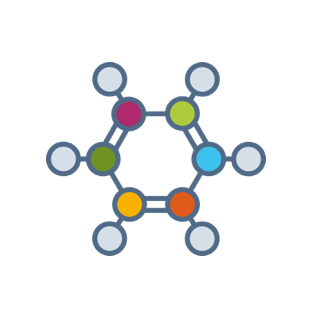-
Looking for HSC notes and resources? Check out our Notes & Resources page
Ranking of boiling points (1 Viewer)
- Thread starter NexusRich
- Start date
It seems like different amines have different boiling points. For example, butylamine boils at 78°C whereas dipropylamine boils at 111°C.

 chem.libretexts.org
chem.libretexts.org
The same seems to apply for amides as well, as we can see that the boiling point of formamide is 193°C, whereas the boiling point of benzamide is 290°C.

 chem.libretexts.org
chem.libretexts.org
It also seems like ketones have higher boiling points than aldehydes:
For ketones and aldehydes of similar molecular mass, ketones have higher boiling points due to the fact that its carbonyl group is more polarized than in aldehydes. So, interactions between molecules of ketones is stronger than between molecules of aldehydes, and that gives a higher boiling point.

 chemistry.stackexchange.com
chemistry.stackexchange.com
Boiling points of aldehydes seem particularly low when compared to the above elements. For example, CH3CHO has a boiling point of 21°C.

 chem.libretexts.org
chem.libretexts.org
Carboxylic acids also seem to have high boiling points, but not as high as amides. For example, formic acid boils at 100°C and benzoic acid boils at 249°C.

 chem.libretexts.org
chem.libretexts.org
Alcohols seem to have lower boiling points than those of carboxylic acids. For example, methane boils at -164°C and ethane boils at -89°C.

 chem.libretexts.org
chem.libretexts.org
Sorry if this is not as direct as you would like it to be but I hope it helps!

15.11: Physical Properties of Amines
Primary and secondary amines have higher boiling points than those of alkanes or ethers of similar molar mass because they can engage in intermolecular hydrogen bonding. Their boiling points are …
The same seems to apply for amides as well, as we can see that the boiling point of formamide is 193°C, whereas the boiling point of benzamide is 290°C.

15.14: Physical Properties of Amides
Most amides are solids at room temperature; the boiling points of amides are much higher than those of alcohols of similar molar mass. Amides of five or fewer carbon atoms are soluble in water.
It also seems like ketones have higher boiling points than aldehydes:
For ketones and aldehydes of similar molecular mass, ketones have higher boiling points due to the fact that its carbonyl group is more polarized than in aldehydes. So, interactions between molecules of ketones is stronger than between molecules of aldehydes, and that gives a higher boiling point.
Why are the boiling points of aldehydes less than those of ketones?
Both aldehydes and ketones have a carbonyl group, but since the carbonyl group of ketone is between alkyl groups, wouldn't it be more difficult for it to form hydrogen bonds than aldehydes? Why the...
Boiling points of aldehydes seem particularly low when compared to the above elements. For example, CH3CHO has a boiling point of 21°C.

Properties of Aldehydes and Ketones
This page explains what aldehydes and ketones are, and looks at the way their bonding affects their reactivity. It also considers their simple physical properties such as solubility and boiling …
Carboxylic acids also seem to have high boiling points, but not as high as amides. For example, formic acid boils at 100°C and benzoic acid boils at 249°C.

15.3: Physical Properties of Carboxylic Acids
Carboxylic acids have high boiling points compared to other substances of comparable molar mass. Boiling points increase with molar mass. Carboxylic acids having one to four carbon atoms are …
Alcohols seem to have lower boiling points than those of carboxylic acids. For example, methane boils at -164°C and ethane boils at -89°C.

14.3: Physical Properties of Alcohols
Alcohols have higher boiling points than do ethers and alkanes of similar molar masses because the OH group allows alcohol molecules to engage in hydrogen bonding. Alcohols of four or fewer carbon …
Sorry if this is not as direct as you would like it to be but I hope it helps!
in order of increasing bp: amine, aldehyde, ketone, alcohol, carboxylic, amides.
the explanation for bonding:
amine: has hydrogen bonds due to the -NH functional group, but N is the least electro-negative so it has very weak hydrogen bonds.
aldehyde/ketone: has the carbonyl functional group which is very electro negative thus has strong dipole dipole atteraction, the difference between alehyde and ketone is due to the packing that the difference in attachement of the C=O bond causes.
alcohol: Has the OH group which is able to form strong hydrogen bonds and create a lattice type arrangement of bonds.
carboxylic: has both the OH and C=O bond, which allows it to from 2 hydrogen bonds which is stronger than 1 of the alcohols.
amide: can form more extensive hydrogen bonds, 1 bond with the C=O group and another with the NH group, this allows for extensive lattices of bonding.
Note: when explaining BP just state that the stronger bonds require more energy to break hence there is a larger bp.
the explanation for bonding:
amine: has hydrogen bonds due to the -NH functional group, but N is the least electro-negative so it has very weak hydrogen bonds.
aldehyde/ketone: has the carbonyl functional group which is very electro negative thus has strong dipole dipole atteraction, the difference between alehyde and ketone is due to the packing that the difference in attachement of the C=O bond causes.
alcohol: Has the OH group which is able to form strong hydrogen bonds and create a lattice type arrangement of bonds.
carboxylic: has both the OH and C=O bond, which allows it to from 2 hydrogen bonds which is stronger than 1 of the alcohols.
amide: can form more extensive hydrogen bonds, 1 bond with the C=O group and another with the NH group, this allows for extensive lattices of bonding.
Note: when explaining BP just state that the stronger bonds require more energy to break hence there is a larger bp.
